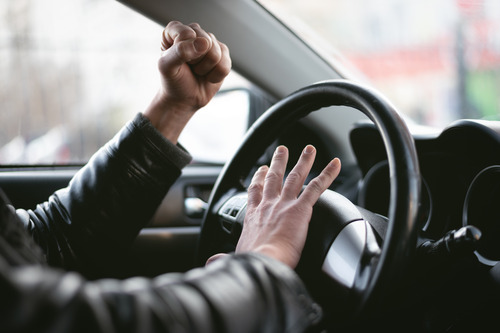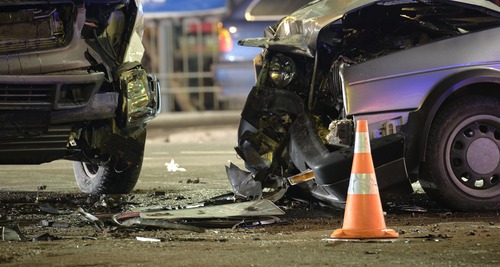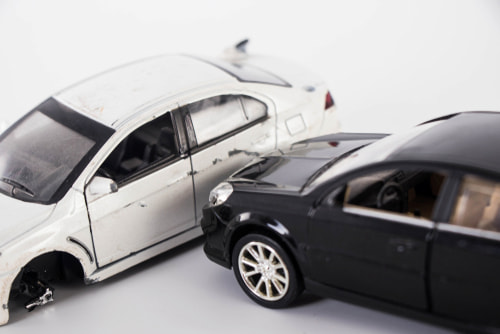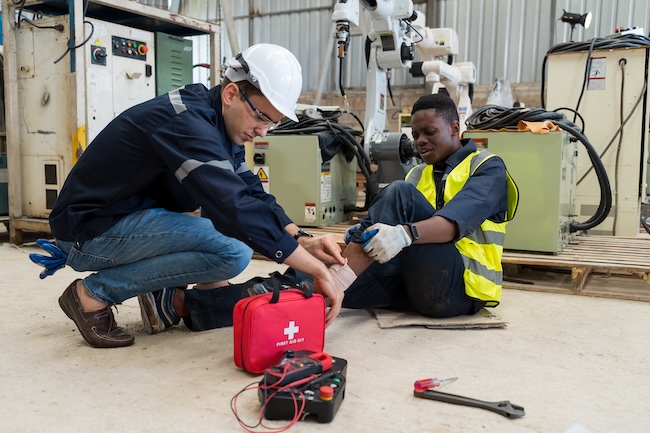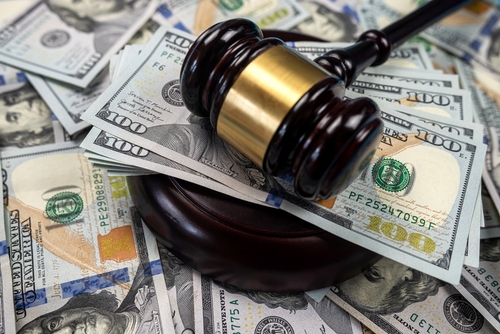At Buddoo & Associates, we are dedicated to helping injured individuals in Atlanta and the surrounding areas. Since 2003, our team has successfully represented thousands of clients, recovering millions of dollars in compensation. We handle a wide range of personal injury cases, including car accidents, motorcycle accidents, truck accidents, and more. Our hands-on approach ensures that each client receives personalized attention and the highest level of legal representation.
Aggressive driving accidents are a growing concern on Georgia’s roads, particularly in areas like Tucker, where traffic congestion and impatient drivers often lead to dangerous situations. This type of driving, which includes behaviors like speeding, tailgating, and reckless lane changes, significantly increases the risk of accidents and injuries. Understanding how to handle an aggressive driving accident is essential for protecting your safety and your legal rights.
In this blog, we will cover what aggressive driving is, key traffic offenses, and essential steps to take after an accident, including how an experienced Tucker aggressive driving accident lawyer can help you navigate the legal process.
What is Aggressive Driving?
Aggressive driving refers to dangerous behaviors behind the wheel that put others at risk. It includes actions that go beyond normal driving and show a disregard for traffic laws and the safety of others. In Georgia, aggressive driving can lead to serious accidents and injuries.
Key Signs of Aggressive Driving
Aggressive driving can take many forms, but the most common signs include speeding, tailgating, and weaving in and out of traffic. Drivers may also engage in behaviors like running red lights or cutting off other vehicles. These actions are often seen in high-stress situations or when a driver is frustrated, but they can lead to traffic crashes and other dangerous outcomes.
Legal Definition of Aggressive Driving in Georgia
In Georgia, aggressive driving is defined by the law under O.C.G.A. § 40-6-397. This statute covers a combination of moving traffic offenses committed with the intent to intimidate or harass another driver. The law recognizes behaviors like speeding, failing to yield, or weaving through traffic as forms of aggressive driving.
Impact of Aggressive Driving on Traffic Safety
Aggressive driving is a major cause of motor vehicle accidents and traffic fatalities. According to the National Highway Traffic Safety Administration (NHTSA), aggressive driving accidents increase the likelihood of fatal crashes and serious injuries. It is a leading factor in both road rage incidents and crashes that involve pedestrians, cyclists, and other motorists.
Consequences of Aggressive Driving
Drivers who engage in aggressive behavior risk more than just accidents. They may face legal penalties such as fines, points on their driving record, or even jail time in severe cases. In addition, victims of aggressive driving accidents may suffer from physical injuries and emotional trauma. If you are involved in an aggressive driving accident, it is important to consult a lawyer to understand your rights and pursue compensation for any damages.
Key Traffic Offenses Leading to Aggressive Driving Accidents
Aggressive driving accidents often stem from specific traffic offenses. These offenses put other drivers, pedestrians, and passengers at risk of injury or death.
Speeding
Speeding is one of the most common forms of aggressive driving. Exceeding the speed limit, especially in heavy traffic or construction zones, significantly increases the risk of an accident. Drivers who speed may not have enough time to react to sudden changes in road conditions or other vehicles, leading to collisions and serious injuries.
Tailgating
Tailgating occurs when a driver follows another vehicle too closely. This behavior reduces the distance needed to react to sudden stops or slowdowns. Tailgating is a dangerous form of aggressive driving that often leads to rear-end collisions and property damage. It can also escalate road rage incidents.
Reckless Driving
Reckless driving involves operating a vehicle with a willful disregard for the safety of others. According to O.C.G.A. § 40-6-390, reckless driving includes actions like running red lights, speeding through stop signs, or driving on the wrong side of the road. Reckless driving increases the likelihood of fatal crashes and motor vehicle accidents.
Failing to Yield
Failing to yield the right of way is another common aggressive driving offense. This can lead to dangerous situations at intersections, on ramps, or when merging onto highways. Drivers who disregard yield signs or fail to give others the right of way often cause accidents that result in serious injuries or fatalities.
Weaving Through Traffic
Weaving through traffic involves changing lanes rapidly and without signaling. Drivers who weave through traffic often do so to gain an advantage, but this behavior can lead to accidents when they cut off other vehicles or fail to notice drivers in their blind spots. It is a hazardous driving practice that can easily lead to collisions and endanger everyone on the road.
Understanding Road Rage and Its Consequences
Road rage is a dangerous and violent form of aggressive driving that can lead to severe consequences. It involves intentional acts of anger or aggression directed at other drivers on the road.
What is Road Rage?
Road rage goes beyond typical frustration or irritation during driving. It occurs when a driver reacts violently or aggressively to another driver’s actions. This can include actions like tailgating, blocking lanes, or making aggressive gestures. Unlike normal traffic offenses, road rage often involves the intent to cause harm or intimidate another person.
Legal Implications of Road Rage
In Georgia, road rage can lead to severe legal consequences. Actions resulting from road rage, such as reckless driving or assault, are punishable under state law. For example, reckless driving is outlined in O.C.G.A. § 40-6-390, and it covers any driving that shows a willful disregard for safety. In extreme cases, road rage incidents may result in criminal charges if they involve threats or physical violence.
Impact on Traffic Safety
Road rage significantly increases the risk of accidents. Drivers engaged in road rage are more likely to make erratic decisions, like speeding or failing to yield, which can lead to motor vehicle accidents and fatal crashes. According to the National Highway Traffic Safety Administration (NHTSA), road rage is often a contributing factor in serious accidents, particularly those involving pedestrians and cyclists.
Consequences of Road Rage
The consequences of road rage can be severe for both the driver and others on the road. Aggressive driving linked to road rage often leads to accidents resulting in injuries or fatalities. Additionally, road rage can lead to legal penalties, such as fines, points on a driver’s record, or even jail time. Victims of road rage accidents may face medical bills, property damage, and emotional distress.
Steps to Take Immediately After an Aggressive Driving Accident
If you are involved in an accident caused by aggressive driving, it’s crucial to act quickly and carefully. These steps will help ensure your safety and protect your legal rights.
Stay Calm and Assess the Situation
The first thing to do after an aggressive driving accident is to remain calm. Avoid reacting aggressively or engaging with the other driver. Assess the situation to ensure you and any passengers are not injured. If you are able, move your vehicle to a safe location away from traffic.
Call the Police
Always call the police after an accident, especially if aggressive driving is involved. Reporting the incident allows authorities to document the situation, which is crucial for insurance claims and any potential legal action. Provide the police with a clear account of what happened, including the other driver’s behavior.
Document the Scene
Collect as much evidence as possible at the scene. Take photographs of the accident, vehicle damage, and the surrounding area, including any road conditions or construction zones that may have contributed to the incident. Gather witness statements and contact information. This evidence will be important if you need to file an insurance claim or pursue legal action.
Seek Medical Attention
Even if you don’t feel injured right away, it’s important to seek medical attention. Some injuries, like whiplash, may not be immediately noticeable. A medical professional can assess your condition and document any injuries you may have sustained in the crash, which can be important for your insurance claim or lawsuit.
Contact an Experienced Accident Lawyer
After an aggressive driving accident, it’s a good idea to contact an experienced attorney. A lawyer can help you understand your rights and guide you through the process of filing an insurance claim or pursuing a lawsuit. They can also help you navigate the legal complexities of dealing with aggressive driving and road rage incidents.
Consult With an Experienced Tucker Aggressive Driving Accident Attorney ASAP!
If you’ve been involved in an aggressive driving accident, it’s important to have an experienced team on your side. At Buddoo & Associates, we specialize in handling aggressive driving cases and can help you navigate the legal process with confidence. Our dedicated team will work to ensure you receive the compensation you deserve for your injuries, damages, and emotional distress.
Contact us at 404-870-3557 for a free case consultation today!
